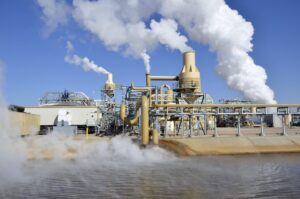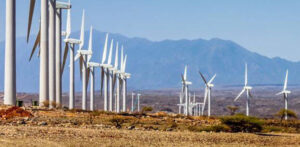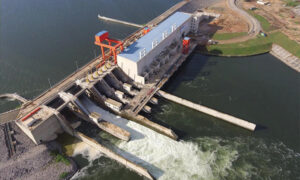For a year now, the region has witnessed the commissioning of new renewable power plants, including the completion of Unit 1 of Olkaria V geothermal power plant adding 79MW to the grid

We have also witnessed 310MW Lake Turkana Wind Power (LTWP) project in Kenya that was officially launched earlier this year.

and the 183MW Isimba hydropower dam in Uganda.

In Tanzania, the government has launched the construction of the 2,115MW Stiegler’s Gorge hydropower plant that will cost $3 billion and which on completion will alleviate the country’s everlasting power problems.
According to verified statistics and data seen by KenyanBulletin.com, the investments that have seen the EAC region get electricity surplus totaling 878MW and with investors projecting it to increase to 4,430MW by 2030.
In Kenya, protesters recently took to the streets of Nairobi over high electricity bills, partly blamed on rampant corruption at the distributor Kenya Power. The corruption that has left consumers and manufacturers continue to lambaste the high costs of electricity.
While commissioning the LTWP, President Uhuru Kenyatta sought to assure Kenyans the country is reaping the benefits of investments in renewable generation projects in line with the government’s plan to pursue clean energies like geothermal, wind and solar.
“Without the wind power project, the fuel cost charge would have been as high as $0.054 (Ksh5.75) kwh in May 2019, compared with $0.035 (Ksh3.75) kwh applied in that particular month,” he said.
The reality, however, is that the promise of access to reliable and affordable electricity across the region has remained an illusion, due to lack of proper planning by governments and power utility firms that have been monopolized by government handlers.
“The best way to make electricity more affordable for households and firms and improve the financial viability of service providers is to focus on using electricity primarily for income-generating activities,” said the World Bank in Electricity Access in Sub-Saharan Africa: Uptake, Reliability and Complementary Factors for Economic Impact.
According to the report, fixing energy reliability problems alone without complementary investments, particularly in the manufacturing sector, will not tackle challenges in the power sector.
Although investing in generation facilities in East Africa has addressed the supply constraints, subdued demand growing at an average of eight per cent has made it impossible for power costs to come down.
More specifically, increase in the installed capacity has instigated what is now emerging as a major predicament of excess capacity with consumers being forced to pay for idle capacity.
According to Mugo Kibati, LTWP Chairperson, Kenya is producing excess power due to low consumption, which pushes the cost up.
According to data and current statistics, Kenya has an already installed capacity of about 2,500MW, against a peak demand of 1,850 MW, leading to an excess capacity of about 700MW.
Uganda is also in the similar situation where generation capacity at 1,167MW is way above their peak demand of about 600MW, making consumers to continue bearing high costs because of idle capacity.
Long term PPAs that the government have signed with the investors have tied hands of the region leaders forcing their countries to grapple with excess capacity.
Across the region, power utilities are in a fix due to long-term Purchase agreements (PPAs) skewed to protect the interests of investors, including those producing electricity using thermal plants.
For instance in Kenya, 27 thermal power plants generate 712MW. While this is power that the country does not need, considering the excess capacity, and the fact that it is expensive and dirty, KPLC must continue buying electricity from them until the expiry of their PPAs, with the last set to expire in 2032.
Whether generating power or lying idle, thermal plans are entitled to a fixed-capacity charge of $0.04 per kilowatt-hour.
This is passed on to consumers as a fuel cost charge, which fluctuates depending on the amount of fuel used in power production. This currently stands at $0.03 per unit.
Another factor that is making power expensive in East Africa is inadequate transmission infrastructure that has immobilized plans for regional power trade.
Delays in constructing transmission lines earmarked under the Eastern Africa Power Pool (EAPP) has made it impossible for the region to have a robust power trade regime that would have made it possible for countries with excess capacity to sell to those struggling with deficits.
Tanzania and Rwanda are currently experiencing a deficit of 485MW and 13MW respectively, but the lack of regional inter-connectors have made it hard for them to buy power from Kenya and Uganda.
Due to failure by governments to commit resources to finance the projects, only two of the nine regional inter-connectors have made significant progress in terms of implementation.
The $1.2 billion Ethiopia-Kenya inter-connector that is being funded by the African Development Bank and the World Bank is slated for completion this year while the construction of the 400kV Kenya-Tanzania inter-connector is ongoing and implementation is being accelerated in order to connect the EAPP with the Southern Africa Power Pool.
Other projects under the EAPP are the 220kV Rusumo-Rwanda-Burundi-Tanzania line, the 500kV Ethiopia- Sudan inter-connector, the 220kV Kenya-Uganda project, the 220kV Uganda-Rwanda line, the 220kV Burundi-Rwanda and the 220kV Democratic Republic of Congo-Burundi project remain in the pipeline but far-off from completion.















